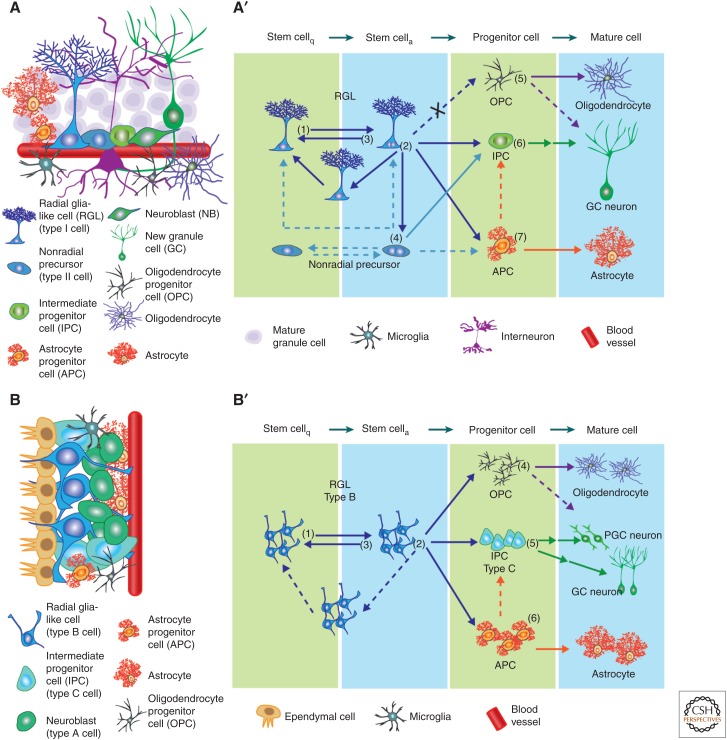Figure 2.
The stem-cell niche and lineage hierarchy among stem cells and their progeny. (A) Schematic illustration of the cell types present in the neurogenic niche of subgranular zone (SGZ) in the dentate gyrus (DG). Shown in A′ is a model of the neural genesis in the adult SGZ under basal conditions. On the single-cell level, quiescent radial glia-like cells (RGLs) can become active and enter cell cycle (1). The active RGLs can generate an intermediate progenitor cell (IPC), an astrocyte progenitor cell (APC), or generate an additional RGL (2), which can become either quiescent or active. The active RGLs can remain in a proliferative state or return to quiescence (3). Nonradial, nestin+ cells produce IPCs and may cycle between quiescent and active states (4). Oligodendrocyte progenitor cells (OPCs) can enter cell cycle and generate mature oligodendrocytes (5). IPCs generate excitatory granule cell (GC) neurons (6). Newborn APCs can generate mature astrocytes (7). (B) A schematic illustration of the cell types present in the neurogenic niche of the subventricular zone (SVZ). Shown in B′ is a model of the neural genesis in the adult SVZ under basal conditions. On the population level (indicated by more than one cell), quiescent RGLs (type B cells) can become active and enter cell cycle (1). Progeny of active type B cells can give rise to IPCs (type C cells), APCs, and OPCs. Whether the RGLs directly make these fate choices remains unknown. RGLs may also generate additional type B cells, which could be either active or quiescent. Active type B cells can return to quiescence (3). OPCs can enter cell cycle and generate mature oligodendrocytes (4). IPCs generate classes of inhibitory neurons including periglomerular cell (PGC) and GC neurons, although it remains unclear whether the fate decisions occur within RGLs or IPCs (5). Newborn APCs can generate mature astrocytes (6). Arrows indicate direct cell generation. Dotted arrows represent potential choices requiring further experimental evidence. Double arrows represent multistep cell generation. Arrows with an X represent choices not experimentally observed.

